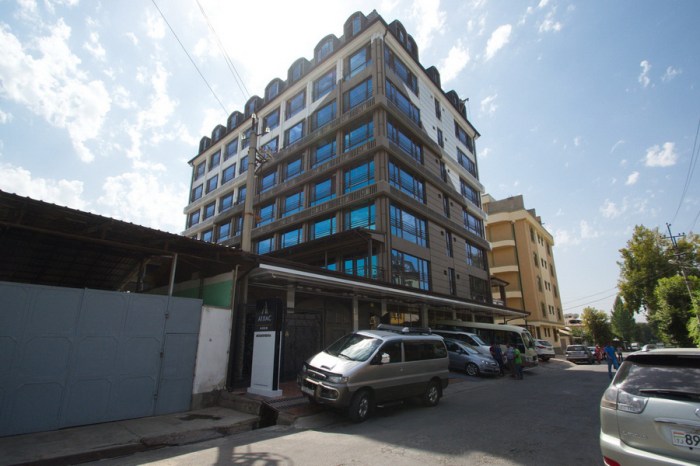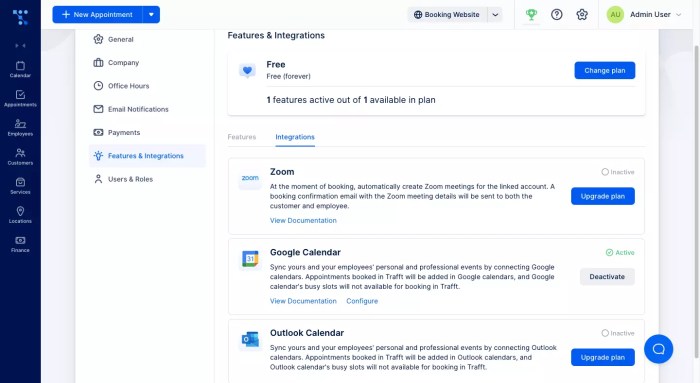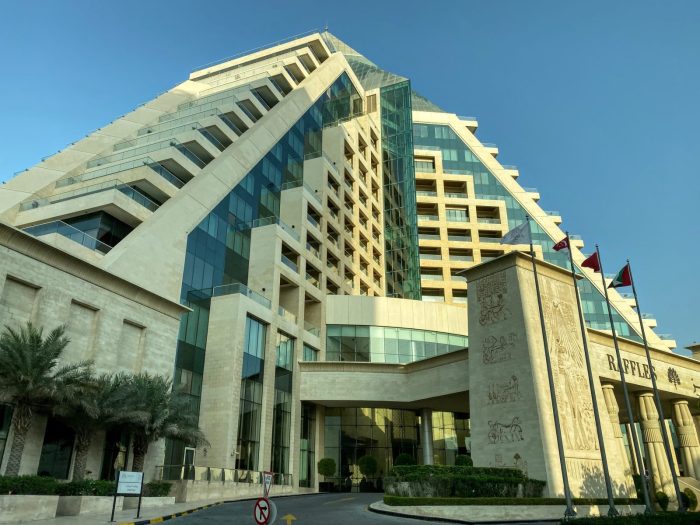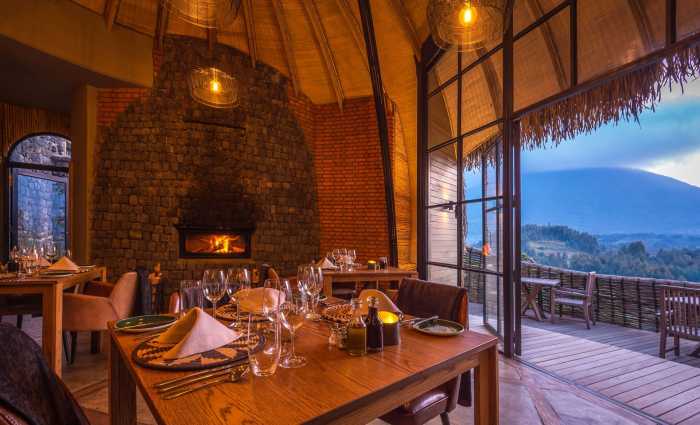Best Hotel Website A Comprehensive Guide
Best hotel website design goes beyond aesthetics; it’s a strategic blend of user-friendly features and compelling content. This guide delves into the crucial elements, from captivating website layouts to seamless booking experiences, and provides actionable insights for creating a truly exceptional online presence for hotels.
From optimizing mobile experiences to implementing secure payment gateways, we explore all the critical components of a successful online hotel platform. We’ll examine effective strategies for content creation, customer interaction, and maintaining a secure environment. This detailed overview will empower you to build a website that not only attracts visitors but also converts them into loyal customers.
Website Design Elements
A well-designed hotel booking website is crucial for attracting and converting potential guests. Effective design elements not only enhance the user experience but also significantly impact a hotel’s online visibility and bookings. This section details key aspects of creating a user-friendly and visually appealing website.
A successful hotel website prioritizes ease of navigation, clear calls to action, and a visually appealing design that reflects the hotel’s brand and ambiance. The design should prioritize user experience, making it intuitive and engaging for potential guests to explore and book.
Effective Website Layouts
A well-structured website layout is paramount for a seamless user experience. The layout should guide visitors effortlessly through the booking process, highlighting key features and amenities. A logical flow, organized by sections and clear navigation, significantly improves user satisfaction.
User-Friendly Navigation Structures
Intuitive navigation is essential for guiding users through the website. A clear hierarchy of menus, a well-organized sitemap, and a prominent search function contribute to a smooth user journey. For example, a dedicated “Rooms” section with detailed descriptions and images of each room type allows guests to easily compare options. Similarly, a “Packages” section facilitates the exploration of special deals and offers.
Calls to Action (CTAs)
Strategic placement of clear and compelling calls to action (CTAs) is critical. CTAs should be prominent, visually distinct, and concise. Examples include “Book Now,” “Learn More,” or “View Photos.” By strategically placing these CTAs throughout the website, the user is actively guided toward the desired action. These elements should be seamlessly integrated into the design, not just as standalone buttons, but as an integral part of the page layout.
Visually Appealing Design Elements
A visually appealing design enhances the user experience and creates a positive impression of the hotel. High-quality images and videos showcasing the hotel’s interior and exterior, amenities, and surroundings are vital. Using professional photography or videography will make the website more visually appealing and trustworthy. A visually consistent style, incorporating branding elements, creates a cohesive brand identity.
Color Palettes and Typography
Color palettes and typography choices significantly influence the website’s overall aesthetic. A color palette that aligns with the hotel’s brand and evokes the desired ambiance is crucial. For example, a serene resort might use calming blues and greens, while a vibrant city hotel might use bolder colors. Similarly, selecting appropriate fonts that are legible and visually appealing is essential. The font should be easily readable across various devices.
Website Layout Options
| Layout | Pros | Cons |
|---|---|---|
| Grid-Based Layout | Organized, visually appealing, easy to navigate, scalable. | It can appear rigid or repetitive if not designed creatively. |
| Full-Width Layout | Visually impactful, modern, and emphasizes images. | It may not be suitable for all content, and can feel overwhelming if not used carefully. |
| Side Navigation Layout | Good for detailed content, allows for easy navigation between sections. | It can feel cluttered if not designed well, and may be less visually appealing than other options. |
| Hero Image Layout | Immediately grabs attention, emphasizes visual appeal. | Can be distracting if not balanced with other content, and may not be suitable for all types of websites. |
Content Strategy
Crafting compelling content for a hotel website is essential for attracting and converting potential guests. A well-structured strategy, focusing on clear descriptions, engaging stories, and meticulous detail, will resonate with the target audience and drive bookings. This strategy involves presenting the hotel’s unique selling propositions (USPs) in a captivating way.
Effective hotel descriptions highlight key aspects, from location and amenities to the overall experience. Detailed room descriptions, combined with stunning imagery, can significantly impact a guest’s decision-making process. This detailed approach allows potential guests to envision themselves staying at the hotel and experiencing its offerings.
Compelling Hotel Descriptions
Hotel descriptions should paint a vivid picture of the guest experience. Avoid generic phrases and focus on sensory details. Use evocative language to showcase the hotel’s atmosphere, highlighting its personality and charm. For instance, instead of simply stating a hotel is “modern,” describe the sleek lines, the use of natural light, and the overall contemporary feel. Specific details, like the use of locally sourced art or the inclusion of sustainable practices, can add depth and appeal.
Examples of Effective Descriptions
A well-crafted description effectively highlights the hotel’s key selling points. For instance, a description emphasizing a hotel’s proximity to a popular attraction, combined with a mention of its on-site restaurant and spa facilities, creates a more enticing proposition for guests. Another example would be a description that focuses on the hotel’s commitment to sustainability, appealing to environmentally conscious travelers.
Showcasing Amenities and Services
Clearly outlining hotel amenities and services is crucial for attracting potential guests. Use concise, easy-to-understand language, and organize the information logically. Present amenities in a visually appealing way, perhaps through icons or short bullet points. Include details about the quality of services, like the attentiveness of staff or the efficiency of the check-in process.
Creating Engaging Stories
Weaving stories about the hotel and its surroundings adds a personal touch and fosters a deeper connection with potential guests. Highlight the hotel’s history, its connection to the local community, or any unique events or experiences. For example, a description could mention the hotel’s role in supporting local artisans or its partnership with local conservation efforts. Sharing the story behind the hotel creates a sense of community and authenticity.
Writing Captivating Room Descriptions
Room descriptions should be detailed and evocative, appealing to the visual and emotional senses. Describe the room’s size, layout, and décor. Include specific details about the bed, bathroom, and any unique features. High-quality images are essential for showcasing the room’s appeal. Adding details about the room’s view or its proximity to amenities can further enhance the description.
Content Writing Styles for Hotel Websites
| Style | Description | Example |
|---|---|---|
| Descriptive | Emphasizes sensory details and vivid imagery to create a strong impression. | “Step into a world of tranquility, where the soft glow of natural light bathes the room in warmth.” |
| Informative | Provides factual information about the hotel, its amenities, and services. | “The hotel boasts 150 spacious rooms, each equipped with a minibar and complimentary Wi-Fi.” |
| Conversational | Uses a friendly and approachable tone, creating a sense of connection with the reader. | “We’re thrilled to welcome you to our cozy haven, where comfort and convenience meet.” |
Mobile Responsiveness
A modern hotel website must prioritize mobile users. A seamless mobile experience is crucial for attracting and retaining customers. Today, many hotel bookings originate from mobile devices, so optimizing for these users is paramount.
Mobile-first design principles are essential for creating an engaging and functional website experience for mobile users. This approach prioritizes the mobile user interface (UI) and experience, ensuring a positive interaction.
Mobile-First Design Principles
A mobile-first approach prioritizes the mobile experience, ensuring a responsive and user-friendly interface across different screen sizes. This design strategy focuses on creating a streamlined, intuitive experience for users on smartphones and tablets. This translates into a better user experience and higher conversion rates. A well-designed mobile site ensures that critical information is readily available and easy to access.
Seamless Mobile Navigation and Booking Processes
Intuitive navigation is key for mobile users. Complex menus and confusing layouts are detrimental. A streamlined navigation system allows users to quickly access information, such as room details, amenities, and booking options. Clear call-to-actions, like “Book Now,” are critical for encouraging conversions. The booking process itself should be simplified on mobile, with a clear and straightforward checkout process. This includes mobile-optimized forms and secure payment gateways.
Benefits of Responsive Design
Responsive design enhances the user experience across various devices, such as smartphones, tablets, and desktop computers. This approach ensures that the website adapts automatically to the user’s device, providing an optimal layout and functionality. Responsive design enhances user satisfaction and improves the overall experience. It also streamlines the maintenance process as developers only need to manage one codebase.
Best Practices for Ensuring Mobile-Friendliness
To ensure a positive mobile experience, prioritize these practices:
- Use a mobile-friendly website design. This includes prioritizing readability, using clear and concise language, and employing a user-friendly layout. This involves understanding the limitations and strengths of mobile devices and adapting accordingly.
- Optimize images for mobile. Large images can slow down loading times. Use appropriate image formats and sizes to ensure fast loading times and a responsive experience.
- Test the website on various mobile devices. Thorough testing on different devices and screen sizes is essential to ensure the website is functional and user-friendly.
Key Mobile Optimization Strategies
A well-optimized mobile website should adhere to these key strategies:
- Employ a fast loading speed. A slow-loading website can frustrate users and drive them away. Optimize images, scripts, and other website elements to minimize load times.
- Utilize a mobile-friendly layout. The website should adapt to different screen sizes and orientations. This ensures a consistent and intuitive user experience.
- Implement clear call-to-actions. Clear call-to-actions, like “Book Now,” are crucial for encouraging conversions. They should be easily visible and intuitive to use.
- Prioritize user experience. Ensure the website is easy to navigate and understand. This includes clear and concise information and an intuitive layout.
Booking Functionality
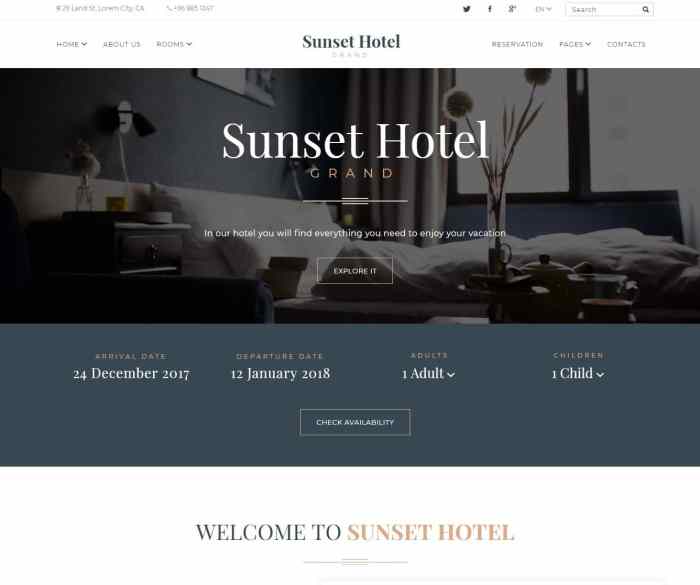
Source: uicookies.com
A user-friendly hotel booking system is crucial for a positive guest experience and maximizing revenue. This section details the essential elements of an effective booking system, from intuitive room selection to secure payment processes. A well-designed booking system streamlines the process, reducing friction and encouraging conversions.
A robust booking system should seamlessly guide users through the entire process, from initial search to final confirmation. This includes clear communication, providing a smooth transition between steps, and preventing any user frustration that could result in abandonment.
Room Selection and Availability
Accurate and up-to-date room availability is paramount. The system should display available rooms clearly and intuitively. Users should be able to filter rooms based on criteria like room type, amenities, and price range. Visual representations of rooms, such as high-quality images and virtual tours, are highly recommended. Real-time availability updates are essential to prevent double bookings and provide the most accurate information to guests. For example, a calendar view showing available dates and rooms alongside price breakdowns enhances the user experience and reduces confusion.
Pricing and Payment Options
Clear and transparent pricing is crucial. The displayed price should include all applicable taxes and fees, presented upfront and clearly. Offering various payment options, such as credit cards, debit cards, and potentially other methods like mobile wallets or local payment solutions, broadens accessibility. This enhances user convenience and ensures a wider range of guests can book. Providing multiple payment gateways, like Stripe or PayPal, enhances security and trust. Different pricing tiers and flexible booking options for different travel periods (like weekend vs. weekday) should be clearly presented, allowing users to understand the cost-benefit analysis of their choice.
Secure Online Payment Gateways
Employing secure online payment gateways is vital for protecting guest information and ensuring the safety of transactions. Implementing encryption and adherence to industry security standards are critical to building trust. Clear indicators of security, such as the presence of HTTPS and security logos, reassure users and foster confidence.
Minimizing Booking Friction
Minimizing friction in the booking process is critical for maximizing conversions. A clear and intuitive navigation structure, providing helpful tooltips and explanations, is important. Providing multiple ways to contact customer support, like a live chat or email, enables users to address concerns promptly and efficiently. Offering various booking periods and flexible cancellation policies can encourage bookings.
Types of Booking Systems
| System | Features | Pros |
|---|---|---|
| Centralized Booking System | Manages bookings for multiple hotels, often with a single platform. Offers advanced reporting and analytics. | Efficient for large hotel chains; streamlined management across properties. |
| Standalone Booking System | Specifically designed for a single hotel, offering greater control over branding and customization. | Better control over specific hotel needs and design; can be tailored for individual hotel needs. |
| API-based Booking System | Connects with external booking platforms (e.g., travel agencies). Allows for broader reach and integration with other systems. | Enhances visibility across different channels; integrates with existing systems. |
Customer Support & Interactions
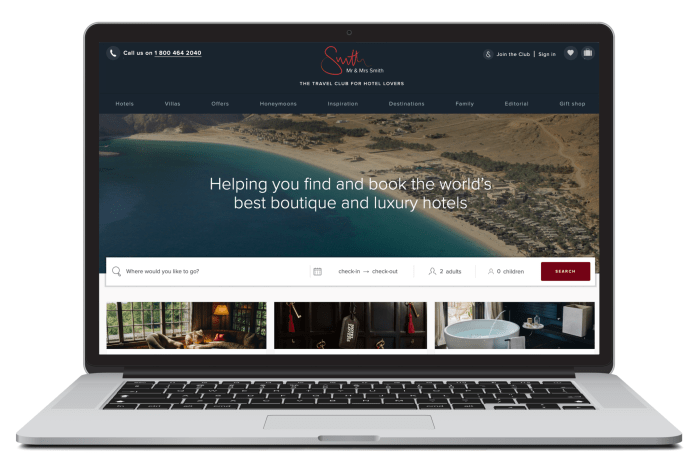
Source: smartertravel.com
A crucial aspect of any successful online hotel booking platform is providing exceptional customer support. This involves more than just answering questions; it’s about proactively anticipating guest needs and fostering a positive experience from initial inquiry to post-stay interaction. Effective customer support builds trust and loyalty, leading to repeat bookings and positive reviews.
Providing multiple avenues for interaction, coupled with streamlined methods for managing inquiries and feedback, is paramount. This ensures that every guest, regardless of their preferred communication style, can receive timely and helpful assistance. A robust customer support system is an investment in the overall success of the hotel and its online presence.
Multiple Channels for Customer Interaction
Offering diverse communication channels is essential for reaching a broad audience and ensuring prompt responses. Guests have varying preferences, and offering multiple options demonstrates a commitment to accessibility and responsiveness.
- Email support provides a formal and detailed channel for addressing complex issues or requests.
- Live chat offers instant support, addressing immediate concerns and facilitating quick problem resolution.
- Phone support allows for personalized conversations and deeper issue exploration, especially beneficial for complex problems.
- Social media platforms enable proactive engagement and response to comments and inquiries, fostering community building.
Managing Online Inquiries and Feedback
Effective management of online inquiries and feedback is vital for maintaining a positive brand image and improving services. A well-organized system ensures that all messages are addressed promptly and professionally.
- Implement a robust ticketing system to track and categorize inquiries, ensuring that no message falls through the cracks. Prioritize urgent requests and manage workloads effectively to provide rapid responses.
- Encourage guests to rate their experience via dedicated online platforms, gathering valuable insights for improvement.
- Actively monitor online review platforms for both positive and negative feedback, addressing concerns promptly and thoughtfully.
Live Chat and FAQs for Instant Support
Live chat and FAQs are powerful tools for providing instant support and addressing common guest questions. These tools are crucial for handling immediate issues and providing quick answers.
- Well-structured FAQs can preemptively answer many common questions, reducing the workload on support agents and providing self-service options to guests.
- Live chat offers real-time assistance, enabling guests to connect with a representative instantly to resolve issues.
- Train support staff on handling various scenarios and encouraging a proactive approach to anticipating guest needs. This includes providing clear scripts and guidelines for common interactions.
Outstanding Customer Service Strategies
Implementing exceptional customer service strategies builds brand loyalty and encourages repeat bookings. These strategies aim to anticipate guest needs and exceed expectations.
- Proactive communication, such as sending pre-arrival welcome messages and post-stay follow-ups, demonstrates care and fosters a positive experience.
- Personalization is key. Tailoring responses to individual needs and preferences, acknowledging previous interactions, demonstrates a deep understanding of the guest.
- Using data to improve services is critical. Analyze feedback, track trends, and tailor support strategies based on guest preferences. This proactive approach minimizes recurring issues and enhances the guest experience.
Collecting and Responding to Reviews and Ratings
Collecting and responding to reviews and ratings is a powerful method for improving services and building a strong reputation.
- Actively monitor online review platforms for positive and negative feedback, addressing concerns promptly and professionally. Respond to both positive and negative reviews, showing that you value guest opinions.
- Use constructive criticism from negative reviews to identify areas for improvement in service or facilities. Address specific issues and take appropriate actions.
- Thank guests for their positive feedback and highlight specific aspects of their experience that they enjoyed. This strengthens positive associations with the brand.
Incorporating Live Chat and Email Support
- Live Chat Integration: Integrate a live chat widget prominently on the website, ideally on every page, for easy access. Ensure it’s available during peak hours.
- Email Support: Include a clear and visible email address prominently on the website, coupled with a contact form for easy access and use. Ensure response times are consistent and detailed.
Accessibility & Inclusivity
A hotel website should welcome all potential guests, regardless of their abilities or needs. Prioritizing accessibility not only enhances the user experience for those with disabilities but also broadens the hotel’s appeal to a wider demographic. This approach reflects a commitment to inclusivity and fosters a positive brand image.
Significance of Website Accessibility, Best hotel website
Making a hotel website accessible benefits all users. It ensures everyone can easily navigate the site, find information, and make bookings. This is crucial for guests with disabilities, but also for those using assistive technologies, or simply those with varying levels of technical proficiency or visual acuity. Accessibility is not just a matter of compliance; it’s a fundamental aspect of providing a positive user experience.
Adhering to Accessibility Guidelines
Adherence to established accessibility guidelines, such as the Web Content Accessibility Guidelines (WCAG), is paramount. These guidelines offer a comprehensive framework for creating websites that are usable by people with disabilities. They encompass a wide range of considerations, from text alternatives for images to keyboard navigation. Following these guidelines promotes consistent usability and avoids creating barriers for users with disabilities.
Examples of Accessible Website Design
Accessible design encompasses various elements. For instance, providing clear and concise language, using sufficient color contrast to ensure readability for users with visual impairments, and ensuring proper alt text for images. Alternative text descriptions enhance understanding for users with visual impairments or those using screen readers. Providing multiple ways to interact with the website, such as keyboard navigation, is crucial. These aspects are integral to ensuring all users can easily access and utilize the information.
Benefits of Inclusive Design
Inclusive design benefits the hotel in several ways. It attracts a wider audience, building a positive reputation for inclusivity and responsiveness to diverse needs. A more inclusive design leads to a greater potential customer base, leading to increased bookings and revenue. Furthermore, it demonstrates a commitment to social responsibility, positively impacting the hotel’s image and brand.
Best Practices for User-Friendly Design
Creating a user-friendly website for guests with disabilities requires several best practices. Ensure proper color contrast for text and backgrounds. Provide clear and concise text, and avoid overly complex layouts. Employ adequate alt text for images, and ensure that the site is navigable via a keyboard. Offering multiple language options and supporting assistive technologies is vital. This approach allows the hotel to cater to a broader spectrum of users, fostering a positive user experience.
Accessibility Features
| Feature | Description | Impact |
|---|---|---|
| Clear Language | Use simple, concise language and avoid jargon. | Improved understanding and navigation for all users. |
| Sufficient Color Contrast | Ensuring a sufficient color difference between text and background colors. | Enhanced readability for users with visual impairments. |
| Alternative Text for Images (alt text) | Providing descriptive text for images to convey their meaning to screen reader users. | Allows users with visual impairments to understand the content of images. |
| Keyboard Navigation | Ensuring all site elements are navigable using only a keyboard. | Provides alternative access for users who cannot use a mouse or trackpad. |
| Multiple Language Options | Offering the website in multiple languages. | Attracts international travelers and guests from diverse backgrounds. |
| Support for Assistive Technologies | Ensuring compatibility with screen readers and other assistive technologies. | Allows users with disabilities to effectively use the website. |
| Simple Navigation Structure | Implementing a straightforward navigation structure with clear labels and logical groupings. | Ease of use for all users, including those with cognitive disabilities. |
Security & Trust
Ensuring guest safety and building trust are paramount for a successful hotel website. A secure platform fosters confidence in online bookings, encouraging repeat business and positive reviews. Implementing robust security measures safeguards sensitive guest data and maintains a professional image.
Protecting guest information and facilitating secure transactions are crucial aspects of a reputable hotel website. Robust security measures and transparent data handling policies demonstrate a commitment to guest well-being and privacy, ultimately building trust and encouraging repeat bookings.
Secure Payment Gateways
Implementing secure payment gateways is essential for processing transactions safely. This involves partnering with reputable payment processors that employ advanced encryption protocols. These protocols, like TLS/SSL, protect sensitive financial data during transmission, preventing unauthorized access and ensuring secure transactions. For example, popular payment processors like Stripe or PayPal offer robust security features to protect both the hotel and the guest.
Data Protection Measures
Data protection is a cornerstone of online security. Hotels must adhere to strict data privacy regulations like GDPR or CCPA. Implementing strong encryption, access controls, and secure storage solutions is crucial for protecting guest information. Regular security audits and vulnerability assessments are also vital to proactively identify and mitigate potential risks.
Security Protocols for User Information
Various security protocols safeguard user information. These include:
- TLS/SSL (Transport Layer Security/Secure Sockets Layer): This protocol encrypts communication between the website and the user’s browser, protecting data in transit. It is widely used and a standard for secure communication over the Internet.
- Data Encryption at Rest: Encrypting data stored on servers ensures that even if unauthorized access occurs, the data remains unreadable. This is critical for protecting personal and financial information.
- Access Control: Restricting access to sensitive data to authorized personnel is vital. Strong passwords, multi-factor authentication, and role-based access control are essential components of access control.
Building Trust and Credibility
Building trust and credibility involves demonstrating a commitment to security and transparency. Clear privacy policies, easily accessible contact information, and responsive customer support are key elements. Furthermore, displaying security certifications and trust badges further enhances credibility and assures guests of a safe and reliable booking experience.
Displaying Security Certifications and Trust Badges
Displaying security certifications and trust badges like the “PCI DSS Compliant” badge or similar industry-recognized certifications assures guests of the hotel’s commitment to data security. These visual cues provide reassurance and increase guest confidence in the website and booking process.
Maintaining Data Security on the Website
Regular security audits and vulnerability assessments are essential for maintaining data security. Employing robust firewalls, intrusion detection systems, and up-to-date security software safeguards the website from cyber threats. Regular software updates and patch management are also vital. Additionally, staff training on security best practices ensures that all personnel understand and adhere to security protocols.
Security Protocols for Hotel Websites
| Protocol | Description | Benefits |
|---|---|---|
| TLS/SSL | Encrypts communication between the website and the user’s browser. | Protects data in transit, ensuring confidentiality and integrity. |
| Data Encryption at Rest | Encrypts data stored on servers. | Protects data even if unauthorized access occurs. |
| Access Control | Restricts access to sensitive data to authorized personnel. | Minimizes the risk of unauthorized access and data breaches. |
| Firewall | A network security system that monitors and controls incoming and outgoing network traffic. | Blocks unauthorized access attempts and protects against malicious activities. |
| Intrusion Detection System (IDS) | Monitors network traffic for malicious activity and alerts administrators. | Identifies and responds to security threats in real-time. |
Closing Summary: Best Hotel Website
In conclusion, crafting a best hotel website requires a holistic approach that integrates design, content, and functionality. By understanding the importance of mobile responsiveness, secure transactions, and positive customer interactions, hotels can create a platform that fosters bookings and builds lasting relationships. This comprehensive guide provides the necessary knowledge to create a website that truly embodies the essence of a top-tier hotel experience.
